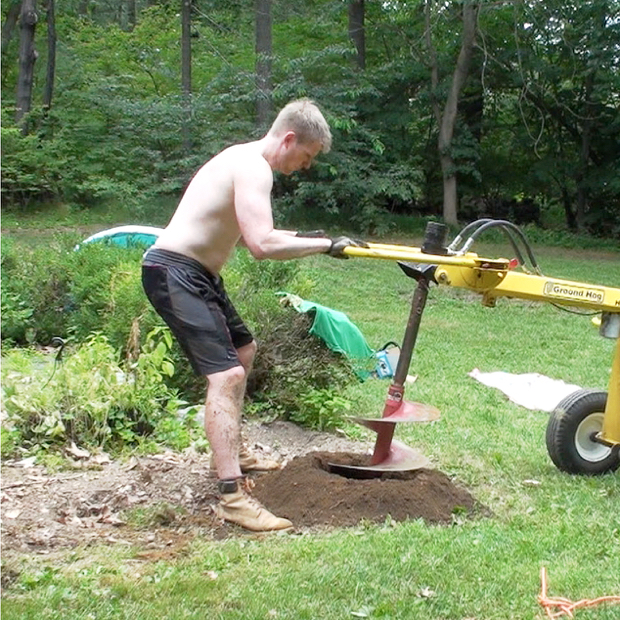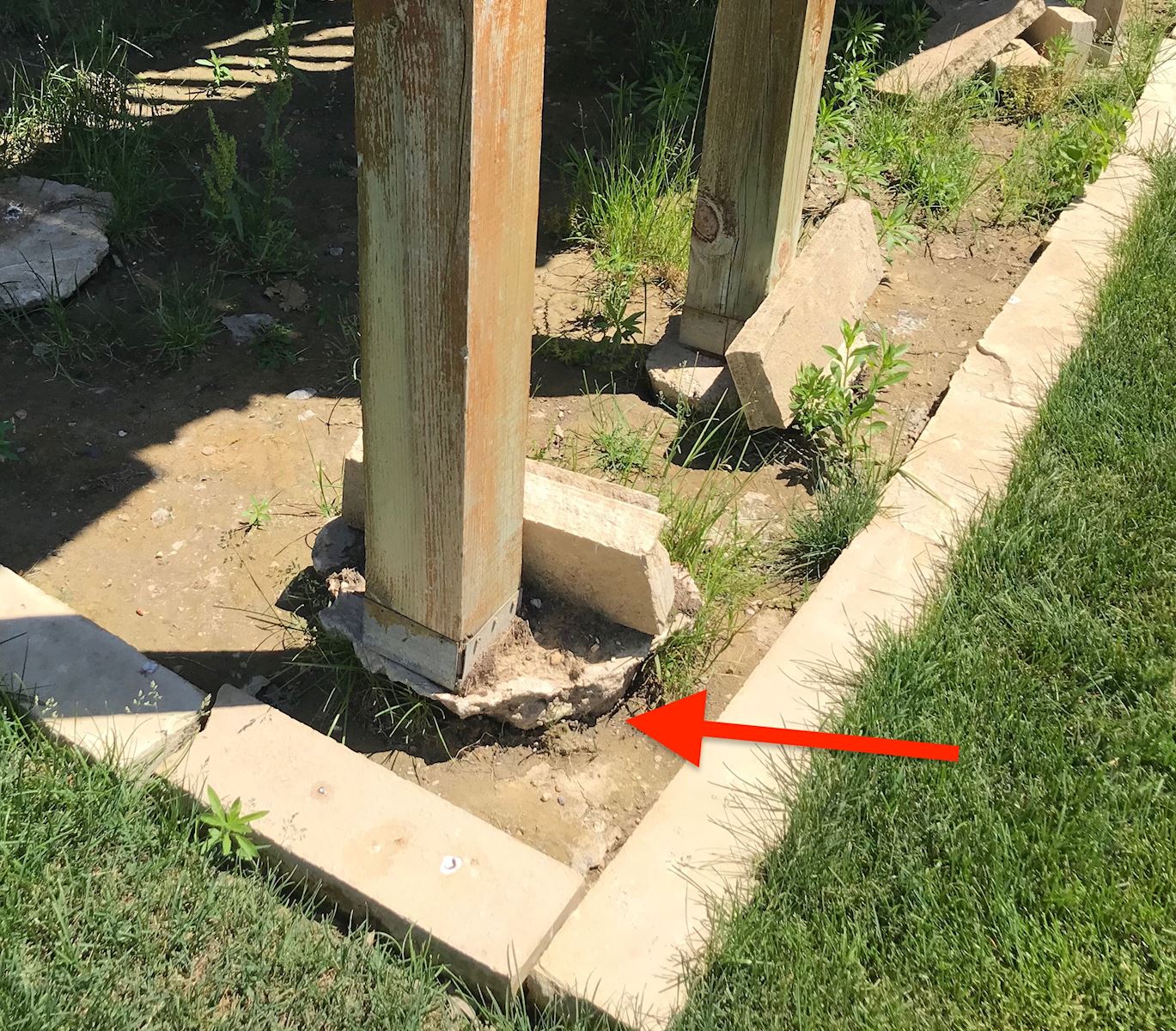Safeguard Foundations, Long-term Impacts: Understanding the Art of Deck Footings Setup
Safeguard Foundations, Long-term Impacts: Understanding the Art of Deck Footings Setup
Blog Article
Selecting the Right Deck Footings for Security and Resilience
The longevity and safety and security of your deck depend greatly on the type of grounds you select, as they supply the vital assistance and security to endure the test of time. In this conversation, we will check out the different kinds of deck grounds, think about the vital factors to evaluate when making a decision, and dive into the pros and disadvantages of various options.
Kinds of Deck Grounds
These grounds are composed of a round hole loaded with concrete, which gives a strong structure for the deck articles. Concrete pier grounds are relatively simple to mount and use superb stability, making them a preferred choice for numerous deck jobs.
These footings are installed by screwing them right into the ground, which produces a protected foundation for the deck. They additionally enable for very easy adjustment and leveling of the deck if required.
Additionally, some building contractors select precast concrete footings. These footings are made of sturdy concrete and be available in various forms and sizes to fit different deck layouts. Precast concrete footings are hassle-free to set up and provide a steady base for the deck structure.
Lastly, another choice is the post-in-anchor ground system. This sort of footing involves driving a steel support into the ground and affixing it to the deck message. It supplies flexibility in regards to positioning the deck messages and is appropriate for decks with light-weight structures.
When selecting the right sort of deck footing, it is necessary to consider variables such as dirt conditions, deck load, and neighborhood building ordinance (Deck Footings). Consulting with a specialist specialist or architectural designer can assist ensure the appropriate footing is chosen for a secure and steady deck
Variables to Think About When Picking Footings
When selecting the ideal grounds for a deck, it is essential to carefully consider different factors such as dirt problems, deck load, and adherence to neighborhood building codes. These factors play a considerable role in making certain the stability and sturdiness of the deck framework.
One of the main aspects to take into consideration is the soil conditions. The sort of dirt on which the deck will certainly be built figures out the sort of footings needed. Decks built on loose or sandy dirts might need much deeper grounds to offer adequate assistance and protect against settling. On the various other hand, decks improved clay or expansive soils might call for footings that can fit the soil's tendency to increase and agreement.
An additional crucial element is the deck load. The weight of the deck, consisting of the products made use of and any type of potential real-time tons such as furnishings or events, should be taken into account when picking footings. The footings must be made to birth the weight of the deck and distribute it equally to prevent any kind of architectural issues or failings.
Lastly, adherence to regional structure codes is vital. Structure codes differ from area to area, and it is important to abide by the specific requirements established by the local authorities. Deck Footings. These codes make certain that the deck is developed safely and fulfills the needed standards for structural honesty and load-bearing ability
Concrete Footings: Cons and pros

Concrete footings provide numerous advantages and drawbacks when utilized as the foundation for a deck. On the favorable side, concrete footings supply outstanding security and durability.
An additional advantage of concrete grounds is their flexibility. They can be put right into different sizes and shapes to suit different deck styles and configurations. Concrete grounds can be personalized to fit the particular requirements and requirements of the deck framework.
Nonetheless, there are also some disadvantages to utilizing concrete grounds. This can enhance the total cost of the deck job and may need specialist aid.

Helical Piers Vs. Sonotubes: Which Is Better?
In considering the structure alternatives for a deck, the contrast in between helical piers and sonotubes is important in determining the remarkable choice. They are twisted right into the ground making use of hydraulic equipment, giving a durable and steady structure for the deck.
When it pertains to security and longevity, helical piers have the top hand. The helical plates on the piers develop a strong grip with the dirt, protecting against any kind of motion or moving of the deck. This is specifically helpful in locations with unstable or changing dirt conditions. Sonotubes, on the various other hand, count solely on the concrete filling for security, which may not offer the very same degree of strength and resistance.
In regards to setup, helical piers are reasonably simpler and faster to install compared to sonotubes. The hydraulic equipment utilized to twist the piers right into the ground makes certain a effective and quick procedure. Sonotubes, on the other hand, need digging holes and putting concrete, which can be time-consuming and labor-intensive.
In addition, helical piers are a more functional alternative. They can be utilized in different soil conditions and can be readjusted or reinforced if required. Sonotubes, on the other hand, find more information may need added assistance, such as rebar, in certain soil conditions or areas with high load view website needs.
Choosing the Right Footings for Your Deck's Measurements
For optimal structural honesty, it is necessary to meticulously select the suitable footings that line up with the measurements of your deck. The measurements of your deck, including its width, elevation, and length, play a considerable role in figuring out the kind and dimension of grounds needed.
When choosing footings for your deck, it is vital to consider the load-bearing capacity of the dirt. The weight of the deck, incorporated with the weight of any kind of furnishings or individuals on it, applies a substantial force on the footings (Deck Footings). For that reason, it is critical to pick grounds that can adequately support this weight without sinking or moving gradually.
The dimension and form of the footings must likewise be thought about. Larger decks with greater measurements call for bigger footings to provide enough security and support. The shape of the grounds, whether they are rounded or square, depends on the layout and design of the deck. In addition, the depth at which the footings are mounted must be figured out based on the frost line in your region to avoid any page kind of heaving or shifting as a result of freezing temperature levels.
Conclusion
In conclusion, choosing the ideal deck grounds is essential for ensuring stability and sturdiness. Variables such as the type of grounds, the deck's dimensions, and the pros and cons of different options ought to be thought about.
These footings consist of a cylindrical hole filled with concrete, which supplies a solid structure for the deck posts. Concrete pier footings are reasonably very easy to mount and supply outstanding security, making them a prominent choice for several deck jobs.
Precast concrete grounds are practical to set up and supply a steady base for the deck structure.
It uses flexibility in terms of placing the deck blog posts and is ideal for decks with light-weight structures.
Concrete footings provide a number of advantages and disadvantages when made use of as the structure for a deck.
Report this page